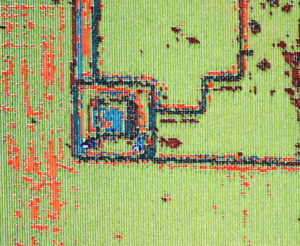Unlock IC PIC18F4580 Binary
Unlock IC PIC18F4580 program and data from their flash and eeprom memory in the format of Binary or heximal, and then copy the firmware into other blank PIC18F4580 Microcontroller to provide the same functions as original MCU;

Unlock IC PIC18F4580 program and data from their flash and eeprom memory in the format of Binary or heximal
10-bit A/D Converter: This module incorporates programmable acquisition time, allowing for a channel to be selected and a conversion to be initiated without waiting for a sampling period and thus, reduce code overhead.
· Extended Watchdog Timer (WDT): This enhanced version incorporates a 16-bit prescaler, allowing a time-out range from 4 ms to over 131 seconds, that is stable across operating voltage and temperature.
Devices in the PIC18F4580 family are available in 28-pin (PIC18F2X80) and 40/44-pin (PIC18F4X80) packages. Block diagrams for the two groups are shown in Figure 1-1 and Figure 1-2.
The devices are differentiated from each other in six ways:
1. Flash program memory (16 Kbytes for PIC18FX480 devices; 32 Kbytes for PIC18FX580).
A/D channels (8 for PIC18F2X80 devices; 11 for PIC18F4X80 devices). I/O ports (3 bidirectional ports and 1 input only port on PIC18F2X80 devices; 5 bidirectional ports on PIC18F4X80 devices). CCP and Enhanced CCP implementation (PIC18F2X80 devices have 1 standard CCP module; PIC18F4X80 devices have one standard CCP module and one ECCP module).
Parallel Slave Port (present only on PIC18F4X80 devices).
6. PIC18F4X80 devices provide two comparators. All other features for devices in this family are identical. These are summarized in Table 1-1. The pinouts for all devices are listed in Table 1-2 and Table 1-3.
Like all Microchip PIC18 devices, members of the PIC18F4580 family are available as both standard and low-voltage devices. Standard devices with Enhanced Flash memory, designated with an “F” in the part number (such as PIC18F2580), accommodate an operating VDD range of 4.2V to 5.5V in order to faciliate the IC Code extraction.
Low-voltage parts, designated by “LF” (such as PIC18LF2580), function over an extended VDD range of 2.0V to 5.5V.
For timing insensitive applications, the “RC” and “RCIO” device options offer additional cost savings. The actual oscillator frequency is a function of several factors:
· supply voltage
· values of the external resistor (REXT) and capacitor (CEXT)
Given the same device, operating voltage and temperature and component values, there will also be unit-to-unit frequency variations. These are due to factors such as:
· normal manufacturing variation
· difference in lead frame capacitance between package types (especially for low CEXT values)
· variations within the tolerance of limits of REXT and CEXT
In the RC Oscillator mode, the oscillator frequency divided by 4 is available on the OSC2 pin. This signal may be used for test purposes or to synchronize other logic. Figure 2-5 shows how the R/C combination is connected.
A Phase Locked Loop (PLL) circuit is provided as an option for users who wish to use a lower frequency oscillator circuit or to clock the device up to its highest rated frequency from a crystal oscillator. This may be useful for customers who are concerned with EMI due to high-frequency crystals or users who require higher clock speeds from an internal oscillator.
Tags: unlock ic encrypted archive,unlock ic encrypted code,unlock ic encrypted content,unlock ic encrypted data,unlock ic encrypted eeprom,unlock ic encrypted file,unlock ic encrypted firmware,unlock ic encrypted information,unlock ic encrypted memory,unlock ic encrypted program

